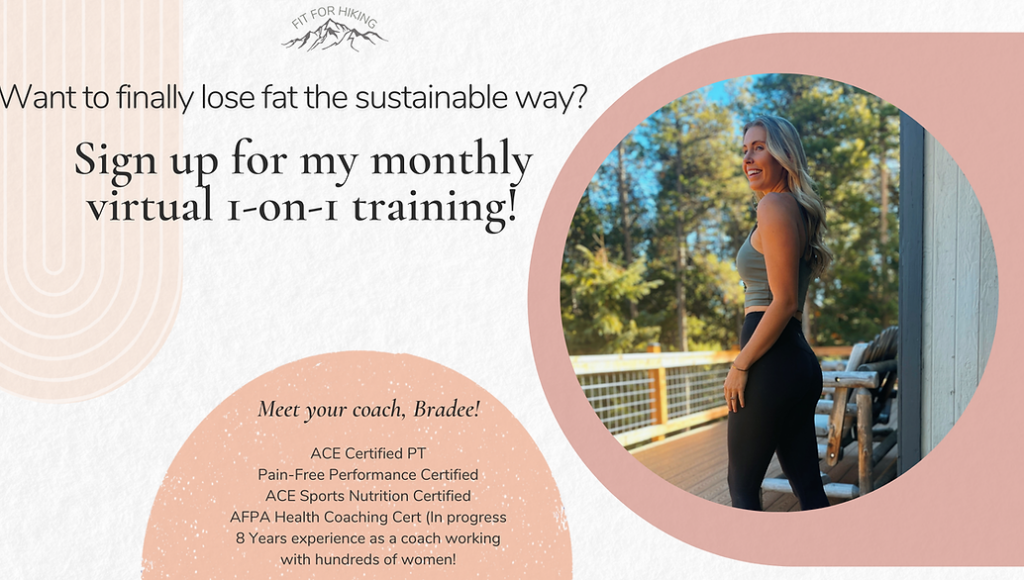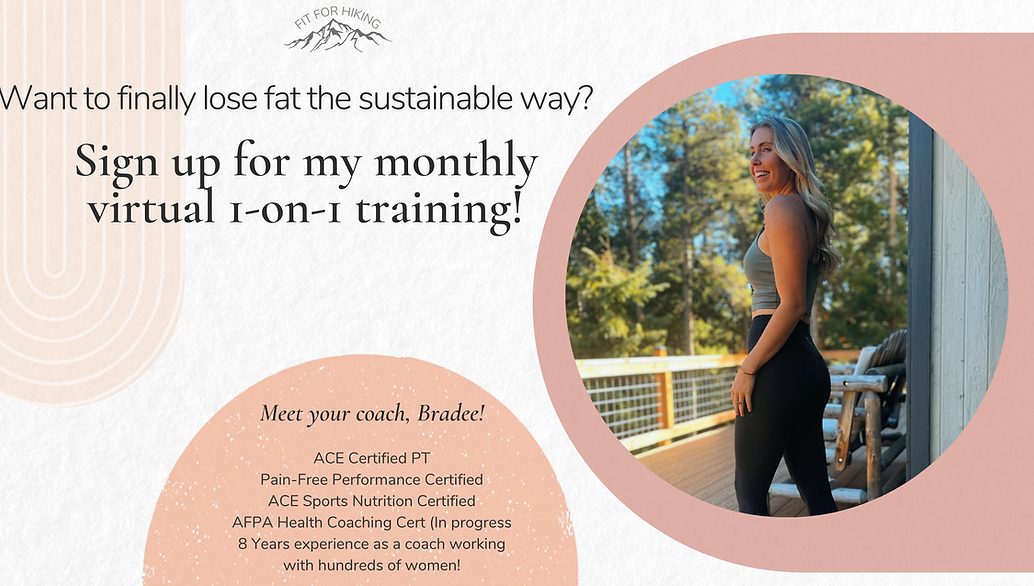Love to hike but don’t love the knee pain you get while hiking? Try adding in these exercises into your weekly fitness regimen to strengthen the muscles surrounding your knee joints.
Knee pain is no fun in any setting. And it’s certainly not fun to feel held back in the outdoor activities you love by something like joint pain. While serious joint pain warrants seeing a physician (and this in no way replaces medical care), these exercises can help mitigate worsening knee pain by increasing bone density, improving joint health, ensuring proper muscles are firing while hiking to put less pressure on the joints and building muscle around the knees.
Do these exercises frequently for joint health + overall lower-body strength
Exercise #1: Glute thrusts
Having strong glutes is one of the biggest overall life hacks because a strong backside will aid you in so many ways. But especially when it comes to hiking, we want our glutes to be a primary mover because this will take less pressure out of the frontside (which tends to fall into the knees).
There are several glute thrust variations you can rotate through, including the following:
Standard bodyweight glute thrust
Laying with your back and head flat on the ground, bend the knees and push heels into the floor as you lift your hips up. Squeeze through the glutes as you go up and down. Add dumbbell across the hips when this becomes too easy.
Single leg glute thrust
Starting in the same beginning position as a standard glute thrust, raise one leg up in the air so all of your weight is in the bottom heel. Lift the hips up and down isolating the single glute. Switch sides halfway to even out the reps. Add dumbbell across the hips when this becomes too easy.
Back elevated glute thrust
Now begin with your shoulders/neck resting against a couch, bench or box. Arms will be out to the side as if you are lounging in a hot tub. Pressing both heels into the ground and keeping knees bent, lift the hips up until the are level with your torso and knees. As you relax back down between reps, tap your booty to the floor to achieve full range of motion. Add a dumbbell or barbell across the hips when this becomes too easy.
Single leg back elevated glute thrust
*This is the toughest variation by far so be sure to work your way up to it in the order listed* Begin in the same starting position as regular back elevated glute thrusts, single lift one leg. When this becomes too easy, add a dumbbell to the hips.
Exercise #2: Deadlifts
Similarly to the glutes, strong hamstrings are highly underrated and extremely helpful for overall leg strength, knee health and they just look dang good. There are several types of deadlift variations you can include in your weekly rotation, including the following:
Standard DB deadlift
With the feet about shoulder width apart, hold a pair of dumbbells so that they are hanging down on your thighs. Tightening your core and keeping your shoulders back (think proud posture + flat back), push your butt back without deeply bending the knees. The dumbbells will come down to about mid-shin height (or to the point you can just about no longer maintain a flat back), then stand back up.
A 1.5 DB deadlift
Keeping in mind all the same principles for form listed for the standard deadlift, simply prop one foot in a “kickstand” position (toes into floor, heel lifted) so that you hold barely any of your bodyweight in that side. Align that toe with your planted foot’s heel. Perform deadlifts as normal, but with about 90% of your bodyweight in the planted foot side. Switch sides to even out reps.
Single leg deadlift
Keeping in mind all the same principles for form listed for the standard deadlift, raise one leg fully off of the floor behind you so that one leg is doing all the work. Only a slight bend in the working leg to really isolate the hamstring and glute. Switch sides to even out reps.
Standard barbell deadlift
Keeping in mind all the same principles for form listed for the standard deadlift, this will simply be a heavier, more intense variation. Bracing the core and keeping good form becomes even more essential as you increase weight!
Exercise #3: Single leg movements
Hiking is one single leg movement after the next. While the same argument can be made about walking, hiking is slightly different because your steps require more power as you push off of one leg to gain elevation, or climb a big boulder. Here are some of my favorite single leg movements to give you uni-lateral leg strength.
DB step-ups
Mimicking what you will actual experience while hiking, place on foot up on a sturdy elevated surface (a box or bench). Pushing into the heel of the top foot, lift the rest of your body up, then back down. Switch sides halfway to even out reps. Start with bodyweight as you get the movement down, then add 1-2 dumbbells for an added challenge. The higher the step, the tougher it will be.
Split squats
Holding two dumbbells down by your sides, place one foot a good distance out in front of the other. Bending both knees to 90 degrees, lower the back knee down to tap the floor (or get close). As this happens, make sure your front heel stays planted full on the ground. Raise up and down keeping the feet where they are. Switch halfway to even out reps.
Bulgarian split squats
This is simply a more advanced version of standard split squats because it increases the range of motion. You will set up the same way, but your back foot will be elevated on a bench or other raised surface. Now as you bend both knees and lower down, it becomes tougher to get the back knee all the way down (although this is the goal!). Switch halfway to even out reps. Make sure you can nail full range of motion split squats before advancing to this variation!
Reverse lunge
Starting with both feet together, take one large step back, lunging the knee all the way to the ground and keeping the other foot fully planted. Stand back up by pushing the front heel into the floor to power through the glute rather than the knee. If this becomes too easy, hold two dumbbells down by your sides, or one heavy dumbbell goblet style at the chest. Switch halfway to even out reps.
Box squats into single leg box squats
For a standard box squat, hold a dumbbell at the chest as you bend the knees to 90 degrees and lower your butt down to tap the bench behind you. Once you get this movement down, try it single leg! Simply pick one leg up so that you are reliant on only one side to sit down with control and power back up. Ensure that the planted foot heel remains down at all times. Switch halfway to even out reps.
As a Pain-Free Performance certified CPT who specifically works with people with hiking goals, I recommend adding at least one of each category into each of your workouts. Not only are these some of the most effective exercises you can do to build strength/shape the lower body, but they will help take pressure out of the knees as you strengthen your glutes, hamstrings and quads.

Happy Trails!
Bradee

Be The First To Comment